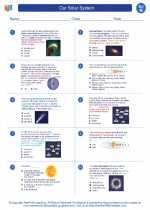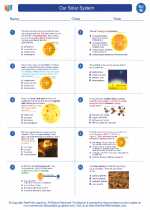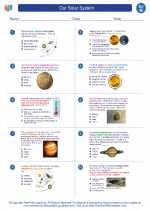Our Solar System -> dwarf planets
Dwarf Planets
A dwarf planet is a celestial body that orbits the sun, has sufficient mass for its self-gravity to overcome rigid body forces so that it assumes a nearly round shape, and has not cleared the neighborhood around its orbit. Unlike regular planets, dwarf planets have not cleared their orbital neighborhood of other debris.
Characteristics of Dwarf Planets
- Orbits the sun
- Has sufficient mass for self-gravity
- Nearly round shape
- Has not cleared its orbital neighborhood
Examples of Dwarf Planets
Some examples of dwarf planets in our solar system include:
- Pluto: Discovered in 1930, Pluto was considered the ninth planet in our solar system until it was reclassified as a dwarf planet in 2006.
- Eris: Eris is about the same size as Pluto and was one of the factors leading to the reclassification of Pluto.
- Ceres: Ceres is the largest object in the asteroid belt between Mars and Jupiter and was reclassified as a dwarf planet in 2006.
Formation and Exploration
Dwarf planets are thought to have formed in a similar manner to regular planets, but their smaller size and location in crowded regions of the solar system prevented them from fully clearing their orbital neighborhoods. Several dwarf planets have been visited by spacecraft, providing valuable data and insights into these intriguing celestial bodies.
Study Tips
When studying dwarf planets, it's important to understand the criteria for classification as a dwarf planet and how they differ from regular planets. Familiarize yourself with the examples of known dwarf planets and their characteristics. Additionally, consider the ongoing exploration and research efforts to learn more about these fascinating objects in our solar system.
[Dwarf Planets] Related Worksheets and Study Guides:
.◂Science Worksheets and Study Guides Eighth Grade. Our Solar System

 Worksheet/Answer key
Worksheet/Answer key
 Worksheet/Answer key
Worksheet/Answer key
